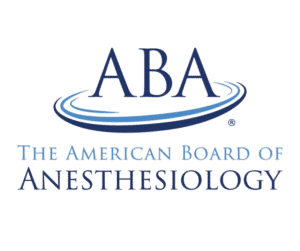If you’re seeking treatment for opioid addiction, chances are that your doctor will need to assess your opioid withdrawal symptoms before proceeding with the treatment. One of the most commonly used tools is the Clinical Opiate Withdrawal Scale (COWS).
Not sure what exactly COWS is, what it entails, or why it’s important for treating opioid addiction? Worry not!
This article will explain the key things you should know about COWS, including how it’s administered, how to interpret its scores, and more.
Clinical Opiate Withdrawal Scale – COWS
The Clinical Opiate Withdrawal Scale consists of 11 items. Here’s what it looks like:
What Is the Clinical Opiate Withdrawal Scale?
The Clinical Opiate Withdrawal Scale (COWS) is an assessment tool designed to determine the severity of withdrawal symptoms in opioid-dependent patients. It assesses 11 different signs or symptoms of opiate withdrawal:
- Resting pulse rate
- Gastrointestinal (GI) upset
- Sweating
- Tremor
- Restlessness
- Yawning
- Pupil size
- Anxiety or irritability
- Bone and joint aches
- Gooseflesh skin
- Runny nose or tearing
By measuring the severity of these symptoms, COWS allows healthcare professionals to determine the patient’s level of opioid dependence. It also helps track changes in withdrawal symptoms over time, allowing them to see how the patient responds to the treatment.
Most commonly, the COWS scale is used to determine the right time for buprenorphine induction, as administering this medication too early can induce precipitated withdrawal symptoms.
To prevent this from happening, the patient should be in a state of mild-to-moderate withdrawal before administering buprenorphine. In other words, they should wait at least 12 hours after short-acting opioids and 36 hours after methadone.
Developed in 1999, the Critical Opiate Withdrawal Scale has received renewed interest of late due to buprenorphine gaining popularity in the United States. Since the first opiate withdrawal scale was developed in the mid-1930s, as many as 18 different opioid withdrawal scales have been used in clinical and research settings.
The COWS withdrawal scale is modeled after CIWA-Ar, the gold standard for assessing alcohol withdrawal. It differs from scales like the Objective Opiate Withdrawal Scale (OOWS) in that it assesses the presence and severity of each symptom. It is also very efficient, as administering it takes no more than two minutes.
How Is COWS Administered?
COWS is administered by licensed clinicians. It can be used in both inpatient and outpatient environments.
The clinician administering the COWS assessment will observe the patient and measure the severity of each symptom individually. During the assessment, they will circle the number that most accurately describes the signs and symptoms displayed and experienced by the patient.
For a patient to score higher than the lowest score in most categories, they must have some observable signs or symptoms of opiate withdrawal.
Some symptoms, such as resting pulse rate and yawning, can be objectively measured or observed. However, others (e.g., bone and joint aches, anxiety, etc.) may be assessed by predominantly relying on the patient’s report of their symptoms.
Moreover, some withdrawal symptoms measured in the COWS screening tool may overlap with other conditions. For example, the patient may experience tearing due to allergies rather than opioid withdrawal alone, which could distort their COWS score. To get objective and accurate results, it’s crucial to score symptoms caused by opioid withdrawal specifically.
At the end of the test, the clinician will add the individual points to get the total COWS score.
The COWS scoring scale is interpreted as follows:
- 0–5 points: no active opioid withdrawal
- 5–12 points: mild opioid withdrawal
- 13–24 points: moderate opioid withdrawal
- 25–36 points: moderately severe opioid withdrawal
- 36+ points: severe opioid withdrawal
The Study of Using the Scale With Buprenorphine
A major benefit of using the COWS scale is that it can help prevent precipitated withdrawal in patients undergoing treatments involving buprenorphine (Subutex®).
While this medication is commonly used in medication-assisted treatment (MAT), it is also useful to detox patients dependent on opioids.
For this reason, it is important to educate nurses and clinicians on the use of COWS. This was also proven by a 2020 study on educating nurses on the use of COWS for patients undergoing buprenorphine induction.
The aim of this study was “to evaluate the effectiveness of training nurses on the use of the Clinical Opiate Withdrawal Scale (COWS) screening instrument by assessing their confidence in assessing and satisfaction with communicating withdrawal information crucial for patient safety.”
During the study, registered nurses and nurse practitioners attended an educational session on the use of COWS. They were asked to complete a survey that evaluated their COWS knowledge and comfort with the tool at three different times: before the session, right after the session, and 90 days after the session.
The results of the study showed that the educational session helped participants gain more knowledge about COWS and led to an increase in confidence and satisfaction with the tool. Their confidence and satisfaction scores increased over time, improving patient care and safety.
The study was hailed a success, and it was suggested that the improvements should be rolled out to other facilities.
Risk and Limitations of the Clinical Opiate Withdrawal Scale
As helpful as using COWS scores for opioid withdrawal assessment is, this tool also has a couple of potential limitations—subjectivity and a lack of emphasis on psychological withdrawal symptoms.
Let’s look into these in greater detail:
- Subjectivity. Since this assessment relies on the clinician’s observations and insights from the patient, the COWS scores may differ between different clinicians. Moreover, patients may have different perceptions of symptoms, pain thresholds, etc., which could affect their scores.
- Lack of emphasis on psychological withdrawal symptoms. Opioid withdrawal is characterized by various physical and psychological symptoms, but the COWS screening tool mainly focuses on physical, observable symptoms. While this helps avoid feigned responses, it may not fully represent patients’ experiences with opioid withdrawal.
Despite these limitations, COWS remains among the most useful tools in assessing opioid withdrawal symptoms and patients’ levels of opioid dependence.
ANR Treatment for Opiate Withdrawals
Accelerated Neuro-Regulation (ANR) is a groundbreaking opioid addiction treatment that can help you reclaim your life from opioid dependence within days—regardless of how long you’ve been using opioids.
By re-regulating the endorphin-receptor system, the ANR treatment addresses the root cause of opioid addiction and restores normal brain function. As a result, it negates the risk of ongoing withdrawal symptoms and relapse, helping patients make a long-lasting recovery from opioid dependence.
The ANR treatment also doesn’t involve buprenorphine or other opioid replacement drugs and thus doesn’t expose patients to the risk of swapping one opioid addiction for another.
Moreover, ANR is very safe. The treatment is performed by board-certified medical professionals in an ICU setting of an accredited hospital. It is also tailored to each patient individually, which makes it suitable for virtually anyone, including those with complex medical issues.
For your convenience, we offer the ANR treatment in several centers around the world, all of which adhere to the same patient care, safety, and quality standards:
- DeSoto Memorial Hospital, Arcadia, Florida
- ANR Europe Thun, Switzerland
- Innovate Intelligent Place, Goiânia, Brazil
- New Vision University Hospital, Tbilisi, Georgia
To get started with ANR, contact us today and book a free consultation.
Key Takeaways
Hopefully, this article answered all the questions you had about COWS.
Now, let’s summarize the key points we covered:
- The Clinical Opiate Withdrawal Scale (COWS) is a tool clinicians use to determine the severity of opioid withdrawal in patients dependent on opioids.
- COWS is administered by licensed clinicians who rate 11 symptoms of opioid withdrawal based on their observations and the patient’s responses.
- Educating nurses and other healthcare professionals on using the COWS withdrawal scale can improve patient care and safety.
- The main limitations of COWS are the potential for subjective assessment of symptoms and the lack of focus on psychological opioid withdrawal symptoms.
- Accelerated Neuro-Regulation (ANR) is an innovative treatment for opioid addiction that restores the brain to its pre-addiction state, negating withdrawal symptoms and the risk of relapse.
Clinical Opiate Withdrawal Scale FAQ
Clinicians assess the COWS score by evaluating 11 signs and symptoms of opioid withdrawal and assigning points to them based on their severity. To get the final COWS score, the clinician will add up all the points, which will determine the intensity of the opioid withdrawal and the extent of your opioid dependence.
COWS scores can range from 0 to 48. The higher the score, the more severe the opioid withdrawal you’re undergoing. Scores below 5 indicate no active withdrawal. If your COWS score is higher than 36, your opioid withdrawal is considered severe.
The purpose of the Clinical Opiate Withdrawal Scale (COWS) is to evaluate the severity of opioid withdrawal symptoms in patients dependent on opioids, such as oxycodone, hydrocodone, or heroin.







